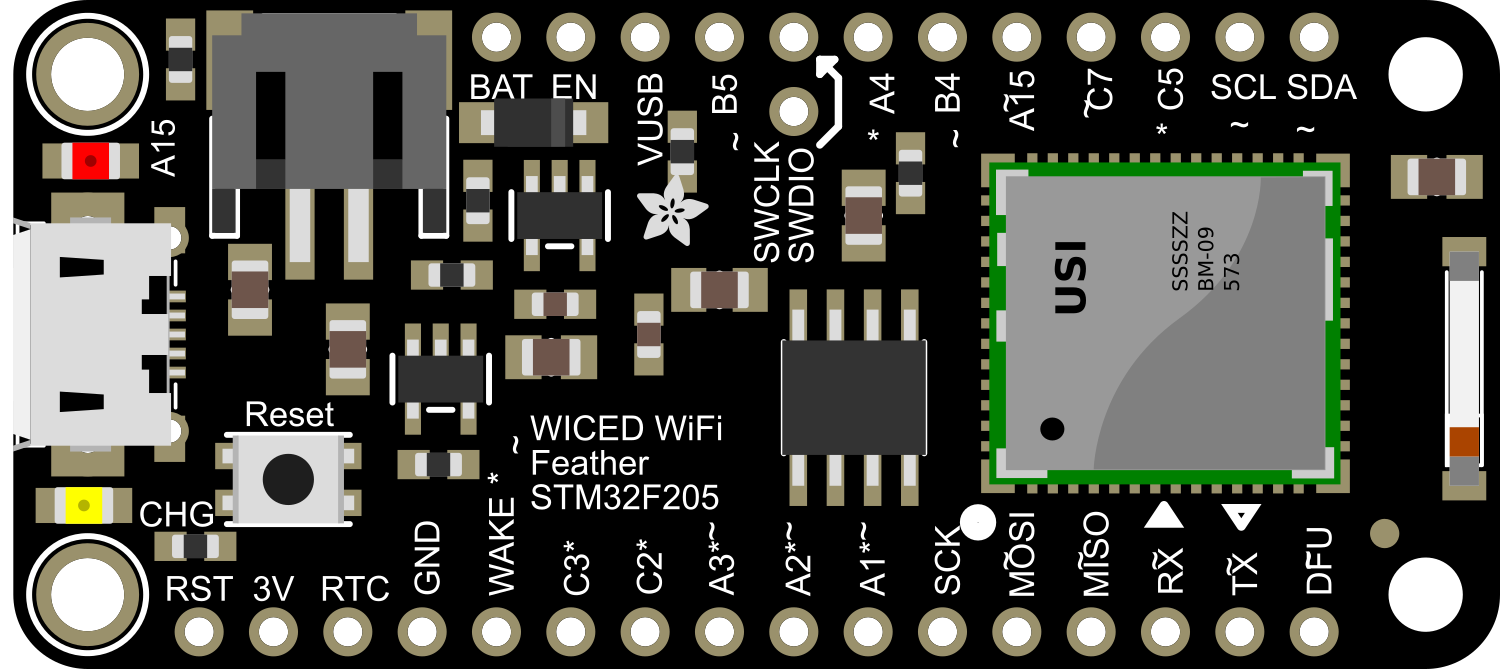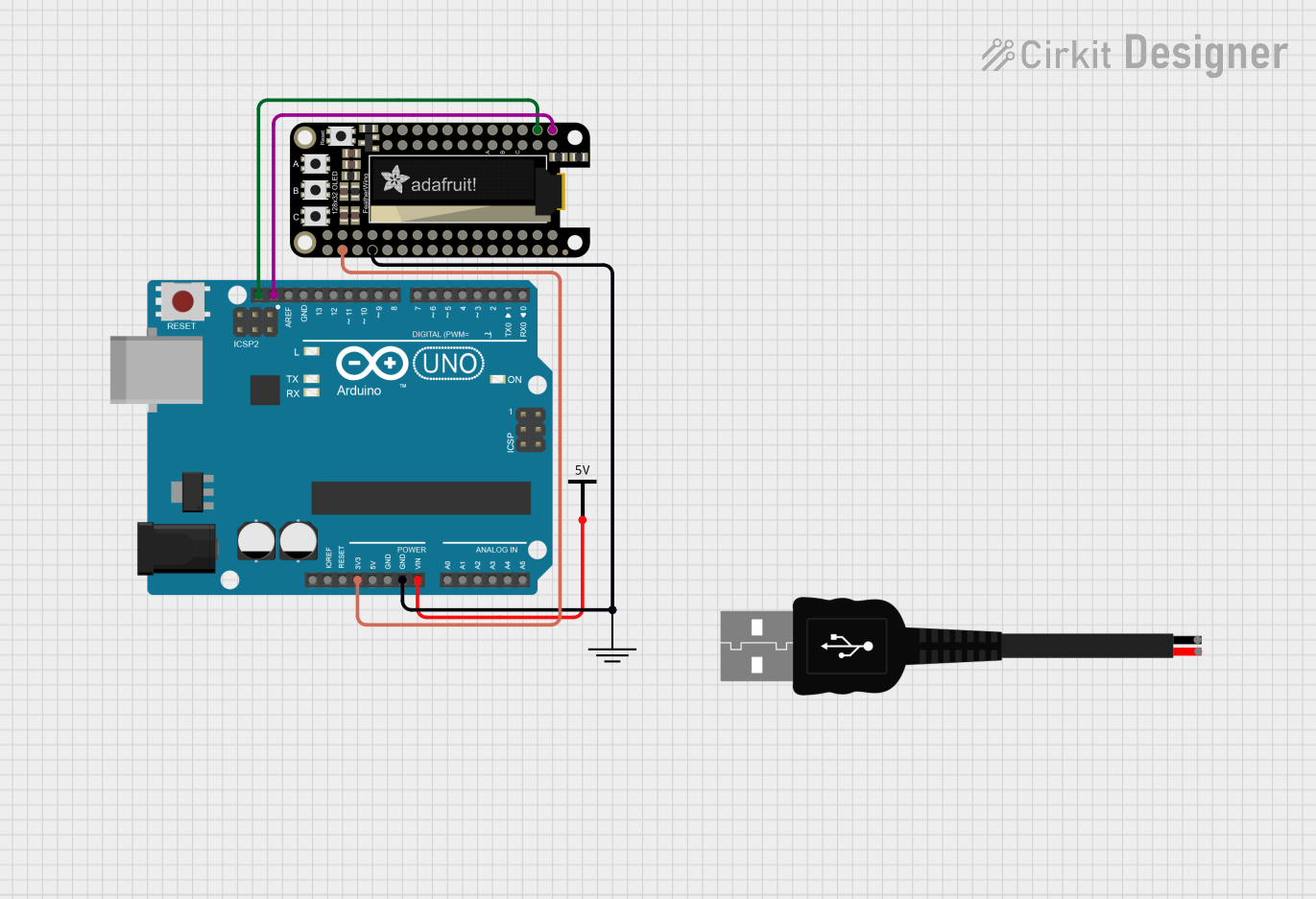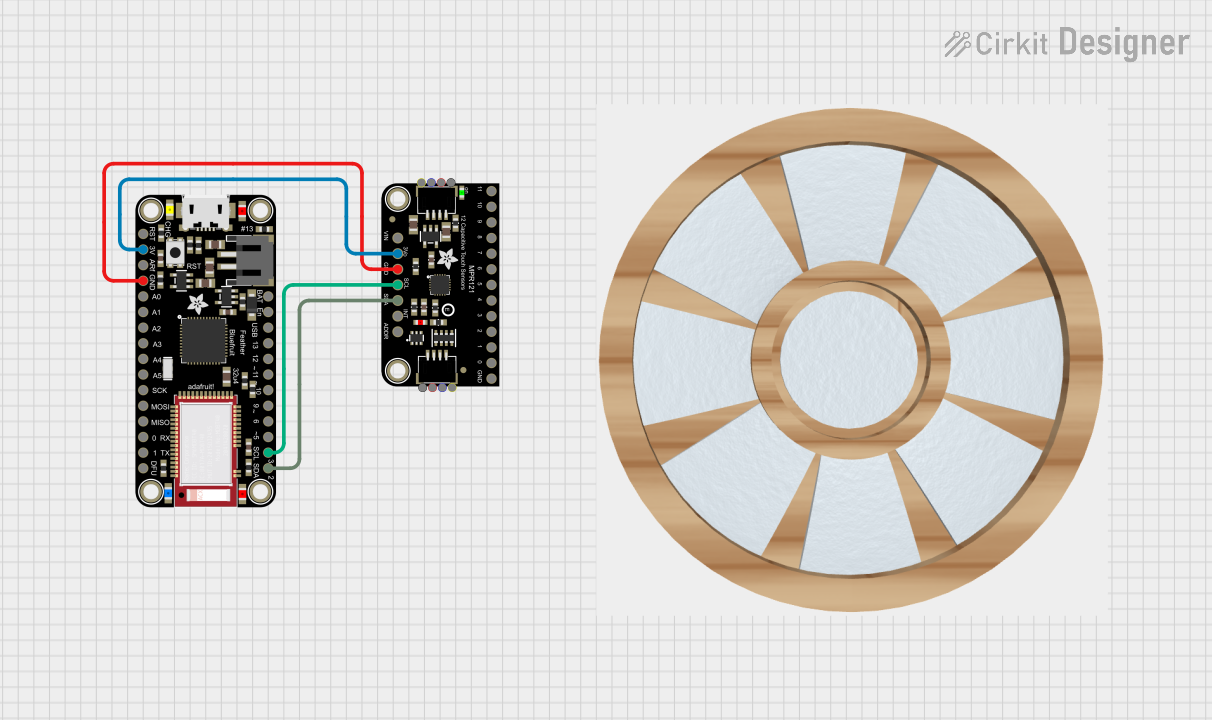
How to Use Adafruit WICED Feather: Examples, Pinouts, and Specs

 Design with Adafruit WICED Feather in Cirkit Designer
Design with Adafruit WICED Feather in Cirkit DesignerIntroduction
The Adafruit WICED Feather is an innovative development board that integrates the robust Feather platform with the wireless capabilities of Broadcom's WICED (Wireless Internet Connectivity for Embedded Devices) platform. This board is designed for hobbyists, engineers, and makers who require Wi-Fi connectivity for their projects. It is ideal for Internet of Things (IoT) applications, wireless sensor networks, smart home devices, and other projects that demand internet connectivity and wireless communication.
Explore Projects Built with Adafruit WICED Feather

 Open Project in Cirkit Designer
Open Project in Cirkit Designer
 Open Project in Cirkit Designer
Open Project in Cirkit Designer
 Open Project in Cirkit Designer
Open Project in Cirkit Designer
 Open Project in Cirkit Designer
Open Project in Cirkit DesignerExplore Projects Built with Adafruit WICED Feather

 Open Project in Cirkit Designer
Open Project in Cirkit Designer
 Open Project in Cirkit Designer
Open Project in Cirkit Designer
 Open Project in Cirkit Designer
Open Project in Cirkit Designer
 Open Project in Cirkit Designer
Open Project in Cirkit DesignerTechnical Specifications
Key Technical Details
- Microcontroller: STM32F205 120MHz ARM Cortex-M3
- Wi-Fi Network Processor: Broadcom BCM43362
- Operating Voltage: 3.3V
- Input Voltage: USB 5V or LiPo battery (3.7V)
- Output Current: 500mA peak
- Flash Memory: 1MB
- RAM: 128KB
- Wi-Fi Standards: 802.11b/g/n
- Security Protocols: WEP, WPA, WPA2
- PCB Dimensions: 51mm x 23mm x 8mm
- Weight: 6.2 grams
Pin Configuration and Descriptions
| Pin Number | Function | Description |
|---|---|---|
| 1 | GND | Ground |
| 2 | 3V3 | 3.3V power supply |
| 3 | BAT | Battery input for LiPo batteries |
| 4 | EN | Enable pin for the regulator |
| 5 | USB | USB power input |
| 6 | SCK | Serial Clock for SPI communication |
| 7 | MISO | Master In Slave Out for SPI communication |
| 8 | MOSI | Master Out Slave In for SPI communication |
| 9 | WKP | Wake-up pin, used to wake the module from sleep |
| 10 | RX | UART receive pin |
| 11 | TX | UART transmit pin |
| 12 | SDA | Serial Data for I2C communication |
| 13 | SCL | Serial Clock for I2C communication |
| 14 | #0 - #11, A0 - A5 | General purpose I/O pins and analog inputs |
Usage Instructions
Integrating with a Circuit
To use the Adafruit WICED Feather in a circuit:
- Powering the Board: Connect the board to a USB power source or attach a 3.7V LiPo battery to the BAT pin.
- Connecting to Wi-Fi: Use the WICED SDK to configure the Wi-Fi settings and connect to a network.
- Interfacing with Sensors/Actuators: Connect sensors or actuators to the GPIO pins, taking care to match the voltage levels and current capabilities.
Important Considerations and Best Practices
- Power Supply: Ensure that the power supply is stable and within the specified voltage range.
- Antenna: The board comes with a built-in PCB antenna. For better range, an external u.FL antenna can be connected.
- Firmware Updates: Regularly update the board's firmware to the latest version for improved performance and security.
- ESD Precautions: Handle the board with proper electrostatic discharge precautions to avoid damaging the sensitive components.
Example Code for Arduino UNO
#include <Wire.h>
#include <SPI.h>
#include <WiFi.h>
// Your network SSID (name)
char ssid[] = "yourNetwork";
// Your network password
char pass[] = "secretPassword";
void setup() {
// Initialize serial communication
Serial.begin(9600);
// Check for the presence of the shield
if (WiFi.status() == WL_NO_SHIELD) {
Serial.println("WiFi shield not present");
// Don't continue if the shield is not present
while (true);
}
// Attempt to connect to WiFi network
while (WiFi.begin(ssid, pass) != WL_CONNECTED) {
Serial.print(".");
// Wait 10 seconds for connection
delay(10000);
}
Serial.println("Connected to WiFi");
printWiFiStatus();
}
void loop() {
// Main logic for your project would go here
}
void printWiFiStatus() {
// Print the SSID of the network you're attached to
Serial.print("SSID: ");
Serial.println(WiFi.SSID());
// Print your board's IP address
IPAddress ip = WiFi.localIP();
Serial.print("IP Address: ");
Serial.println(ip);
// Print the received signal strength
long rssi = WiFi.RSSI();
Serial.print("Signal strength (RSSI):");
Serial.print(rssi);
Serial.println(" dBm");
}
Troubleshooting and FAQs
Common Issues
- Wi-Fi Connection Failure: Ensure the SSID and password are correct. Check the signal strength and the distance from the router.
- Board Not Recognized: Verify the USB cable is working and the drivers are installed correctly.
- Low Power: If using a battery, ensure it is charged. For USB, check that the source can supply sufficient current.
Solutions and Tips
- Resetting the Board: If the board becomes unresponsive, use the reset button to restart it.
- Firmware Upgrade: Periodically check for firmware updates from Adafruit to ensure optimal performance.
- Signal Strength: Use an external antenna if you experience weak signal strength.
FAQs
Q: Can I use the Adafruit WICED Feather with Arduino IDE? A: Yes, you can program the board using the Arduino IDE with the appropriate board package installed.
Q: What is the maximum voltage for the GPIO pins? A: The maximum voltage for the GPIO pins is 3.3V. Applying higher voltages can damage the board.
Q: How do I update the firmware on the Adafruit WICED Feather? A: Firmware updates can be done through the WICED SDK or via the bootloader using a USB connection.
Q: Can I power the board using both USB and battery at the same time? A: Yes, the board has a built-in charging circuit for the LiPo battery when powered via USB.
For further assistance, consult the Adafruit forums or the extensive online documentation available on the Adafruit website.